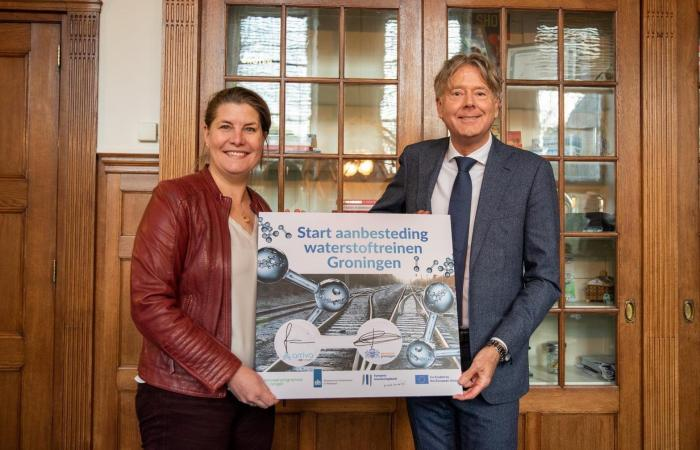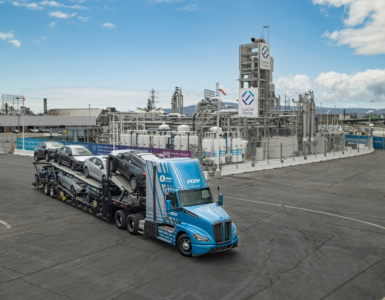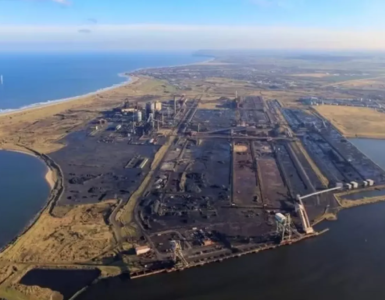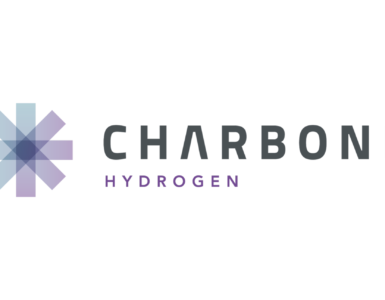Arriva Netherlands launches tender for hydrogen trains, Groningen will receive four hydrogen trains in 2027.
Deputy Fleur Gräper-van Koolwijk (left) and Arriva director Anne Hettinga signed the agreement for the purchase of four new hydrogen trains.Photo: Arriva.
Four hydrogen trains will be running in Groningen from 2027 on the Delfzijl-Groningen-Veendam route. The tender was signed on Thursday 24 November by Deputy Fleur Gräper-van Koolwijk and Arriva director Anne Hettinga. With the signing of this agreement, Arriva will start the European tender for the four hydrogen trains.
Anne Hettinga, Arriva director said:
🔥 What about we co-host a webinar? Let's educate, captivate, and convert the hydrogen economy!
Hydrogen Central is the global go-to online magazine for the hydrogen economy, we can help you host impactful webinars that become a global reference on your topic and are an evergreen source of leads. Click here to request more details
With this hydrogen train, the Groningen traveler gets the first of zero-emission transport on non-electrified rail.
“It is another major innovation in rail by Arriva in close collaboration with the province of Groningen. Taking such a big step towards sustainability within an existing concession can safely be called a piece of art.”
The plan is that passengers will be able to travel with the hydrogen trains on the Groningen regional railway from the end of 2027. The trains are used on the existing Delfzijl-Groningen-Veendam routes and occasionally also on the other railway lines in Groningen and in the direction of Leer.
The province and Arriva also want to use the trains for future expansion or modification of the railway in Groningen. If the construction of the Veendam – Stadskanaal rail route continues, the hydrogen trains will also run here.
Gräper-van Koolwijk, said:
With this we are taking the next step in making public transport in Groningen more sustainable.
“Our ambition is to switch completely to zero-emission passenger transport by 2035”.
Hydrogen train extremely suitable
Daniël Koelikamp, Smart and Green Mobility team manager at the Province of Groningen, said:
We don’t have any overhead wires above the tracks here.
A hydrogen train on the track in Groningen is therefore a good fit, thinks Koelikamp.
“It would take us ten to twelve years to provide the railway lines with overhead wires. The investment costs for this are twice as high as the hydrogen variant. In addition, overhead lines are prone to failure and maintenance has to be done often.”
“We also have a railway line to Germany where they run on a different voltage. If we decide to install an overhead line, you will also have a problem at the border. Then you have to drive another locomotive that is suitable for the voltage of the German railway.” The hydrogen train does not need an overhead line and can easily continue on the German track.
“The disadvantage with hydrogen is that you first have to produce it, then store it (often in the form of compressed gas or cryogenic liquid, ed.) and then you can extract energy from it. You lose, as it were, twice. That process is becoming a lot more efficient, but there is a double loss in that.”
Although hydrogen also has an advantage: “It functions as a kind of large battery and helps a lot in balancing the power grid. For example, we could charge the trains at night with wind energy, which is hardly used at that time.”
Battery trains
“We also looked closely at battery trains, so without a hydrogen component. Only for that, some of our railway lines are simply too long, especially since the trains that stop at the main station in Groningen will soon continue to run on a coupled basis. Groningen CS is then just an intermediate station and you cannot do that with just a battery.”
A hydrogen train also still has a battery, but that is more complementary to the hydrogen, Koelikamp explains. “The battery works on the braking energy of the trains and is often used when the train pulls away from a station. At that point, more power is needed. While running, the train only uses the fuel cell.”
You can also use the fuel cell at peak times, but then you use a lot of hydrogen at once. A relatively small battery can easily supply power at those peak moments.
Gathering money
Last week, the Ministry of Infrastructure and Water Management made 15 million euros available as a contribution to the costs. With this, the government shows that it considers it important to invest in making public transport on its railway lines more sustainable.
In addition to the government grant for the four trains, Europe (CINEA) is contributing 5.8 million euros and the National Program Groningen (NPG) 7 million euros. The government has also awarded a contribution of 5 million euros for a hydrogen tank installation.
READ the latest news shaping the hydrogen market at Hydrogen Central
Tender final: Groningen will receive four hydrogen trains in 2027, November 24, 2022








